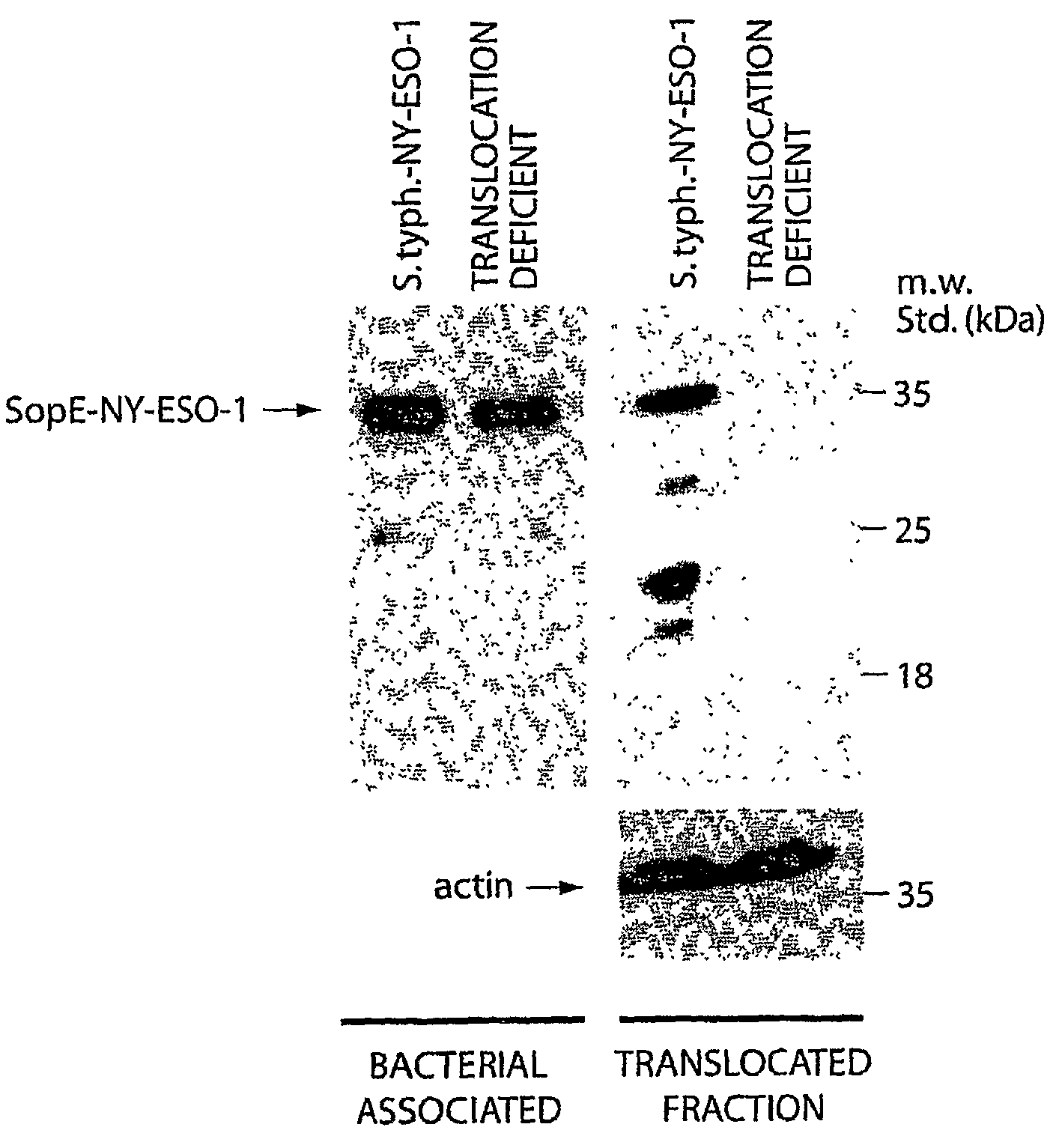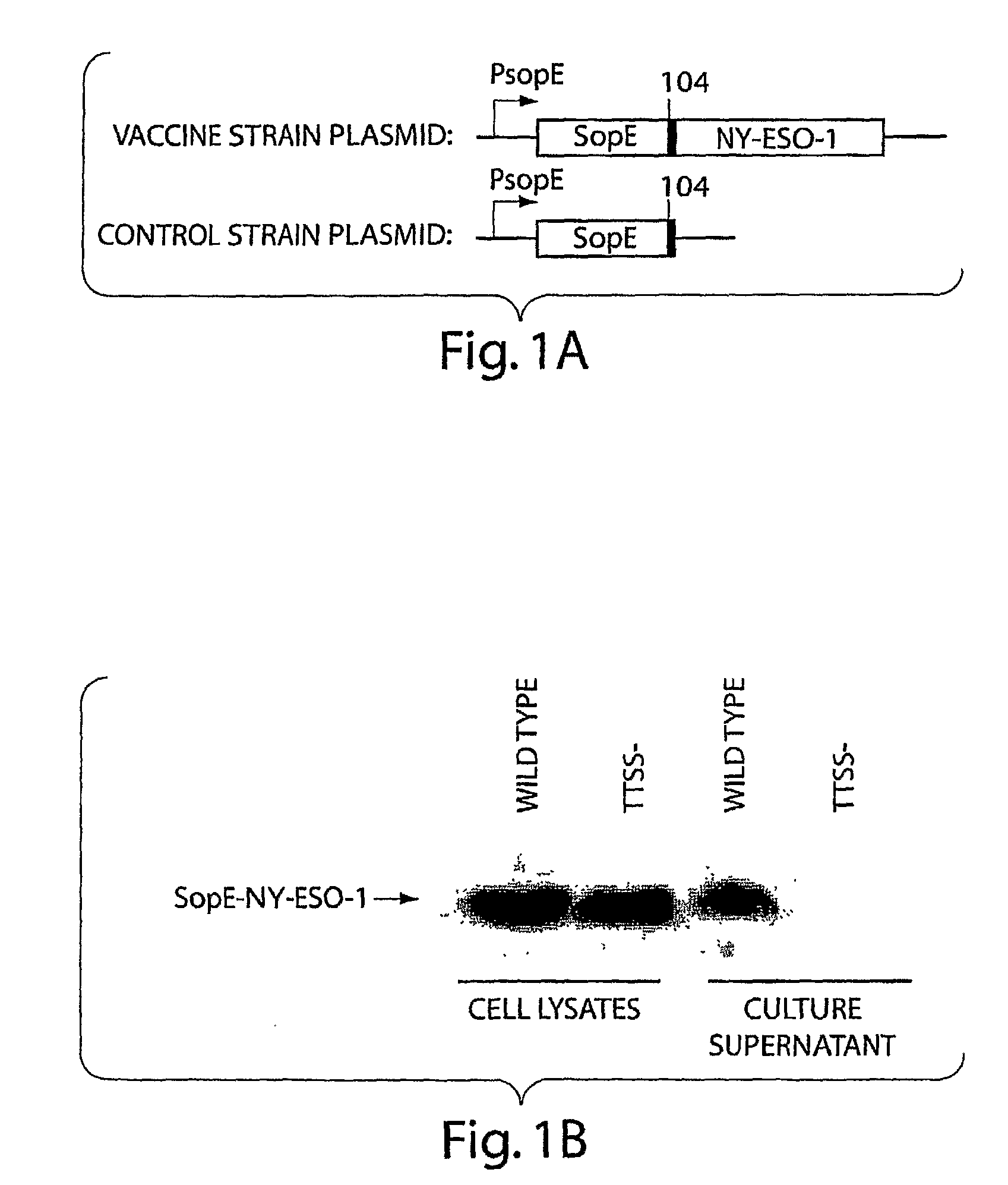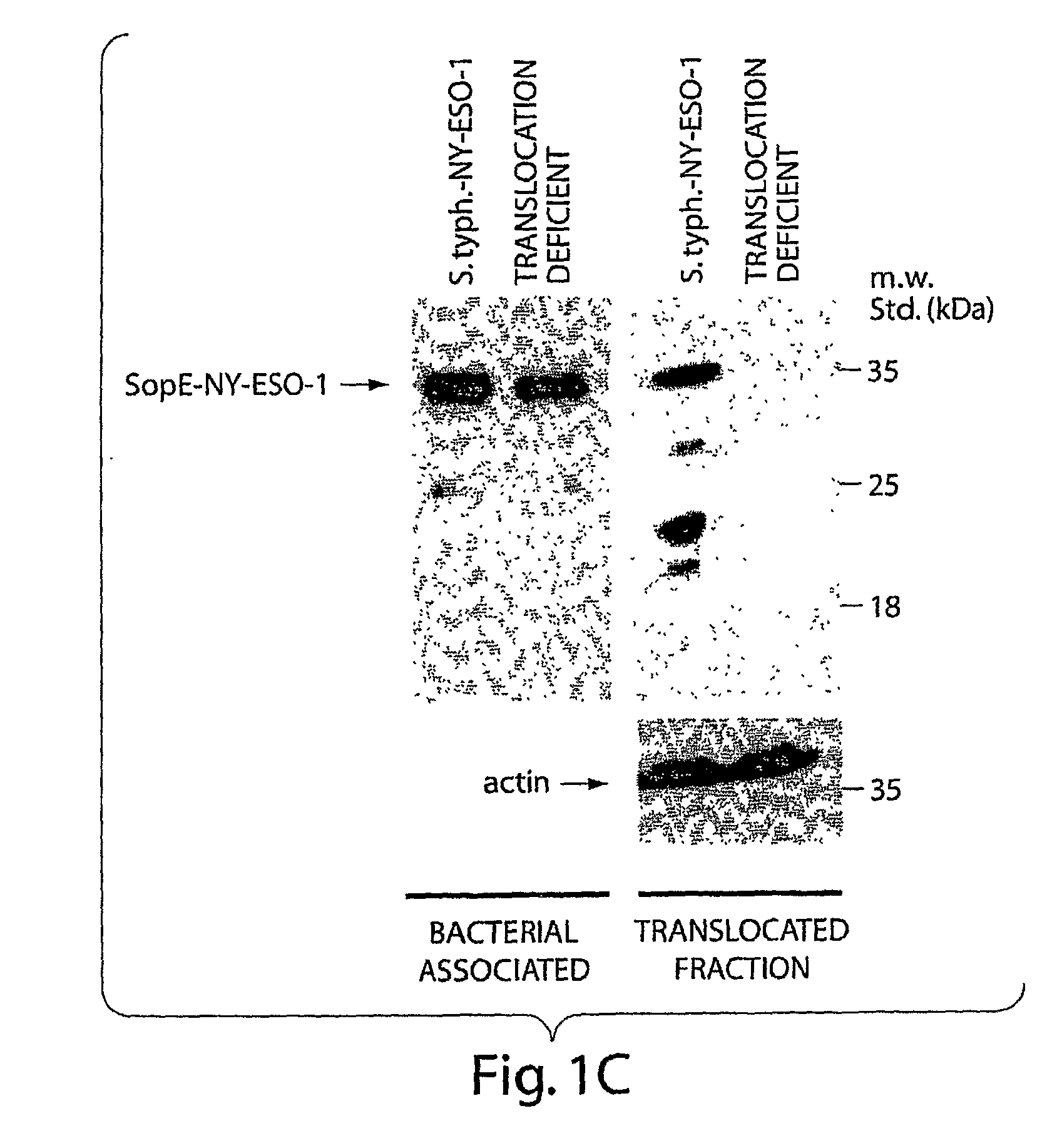Methods for Stimulating an Immune Response Using Bacterial Antigen Delivery System
a technology of bacterial antigen and delivery system, which is applied in the direction of bacteria material medical ingredients, antibody medical ingredients, immunological disorders, etc., can solve the problems of preventing many patients from meeting adequate eligibility criteria and often limited patient enrollmen
- Summary
- Abstract
- Description
- Claims
- Application Information
AI Technical Summary
Benefits of technology
Problems solved by technology
Method used
Image
Examples
example 1
[0116]In vivo Antigen Delivery by Salmonella Type III Secretion System for Therapeutic Cancer Vaccine
[0117]Materials and Methods
[0118]Mice
[0119]Female BALB / c mice and C.B-17 scid mice were purchased from CLEA JAPAN (Osaka, Japan) and used at 7-10 weeks of age. Mice were maintained at the Animal Center of Mie University School of Medicine (Mie, Japan). The experimental protocol was approved by the Ethics Review Committee for Animal Experimentation of Mie University School of Medicine.
[0120]Patients and Effector T Cells
[0121]Patients NW29 and NW634 had NY-ESO-1 expressing melanoma and described previously (35, 36). All samples were collected after informed consent as a part of study approved by the Ethics Committee of Landesärztekammer Hessen, Frankfurt. The HLA-A*0201-restricted CD8+ T cell clone specific for NY-ESO-1157-165, Clone 49, was generated by limiting dilution from tumor infiltrating lymphocytes of a melanoma patient (kind gift of Dr. D. Valmori, Columbia University, New Yo...
example 2
[0166]Use of the Salmonella typhimurium Type III Secretion System for the Development of Novel Anti-Cancer Vaccines
[0167]The S. typhimurium Type III Secretion Systems (TTSS).
[0168]In the last few years, a novel protein secretion pathway has been identified in a variety of pathogenic Gram-negative bacteria, including many potential agents of bioterrorism such as Yersinia pestis, Burkholderia mallei and pseudomallei, and S. enterca (Galán, J. E., and A. Colhner, Science, 284:1322-1328, 1999). This pathway, which has been named type III or contact dependent, is involved in the secretion and delivery of bacterial effector proteins into the host cell cytosol. These proteins are essential for virulence and have the capacity to modulate cellular functions for the pathogen's benefit. Salmonella spp. encode two of these systems that are involved in different stages of the infections process (Galán, J. E., Annu. Rev. Cell Dev. Biol., 17:53-86, 2001). Extensive studies have been conducted to c...
example 3
[0173]Construction of Fusion Proteins for TTSS Delivery.
[0174]To deliver antigens through the SPI-1 TTSS we have utilized the secretion and translocation signals of SopE (SopE1-104) since this domain behaves as an excellent “molecular courier” to deliver heterologous antigens to antigen presenting compartments (Evans, D. T., et al., J. Virol., 77:2400-2409, 2003). cDNAs encoding the tumor antigens NY-ESO-1, have been fused to the secretion and translocation signals of TTSS-secreted proteins such as SopE or SptP both separately and in tandem in a single construct. Construction of the relevant plasmids has been carried out by standard recombinant DNA techniques. The vectors used are those previously described (Evans, D. T., et al., J. Virol., 77:2400-2409, 2003; Russmann, H., et al., Science, 281:565-8, 1998). The resulting plasmids were introduced into the S. typhimurium ΔphoP phoQ ΔaroA Δasd vaccine strain (Galán, J. E., et al., Micro. Path., 6:433-443, 1989; Galán, J. E., et al., G...
PUM
| Property | Measurement | Unit |
|---|---|---|
| Fraction | aaaaa | aaaaa |
| Immunogenicity | aaaaa | aaaaa |
Abstract
Description
Claims
Application Information
 Login to View More
Login to View More - R&D
- Intellectual Property
- Life Sciences
- Materials
- Tech Scout
- Unparalleled Data Quality
- Higher Quality Content
- 60% Fewer Hallucinations
Browse by: Latest US Patents, China's latest patents, Technical Efficacy Thesaurus, Application Domain, Technology Topic, Popular Technical Reports.
© 2025 PatSnap. All rights reserved.Legal|Privacy policy|Modern Slavery Act Transparency Statement|Sitemap|About US| Contact US: help@patsnap.com



